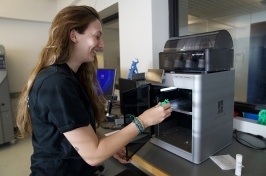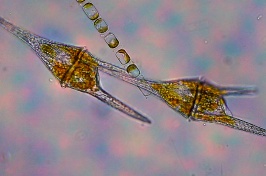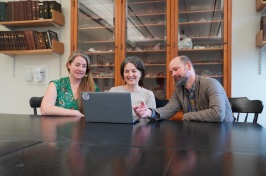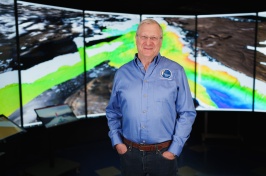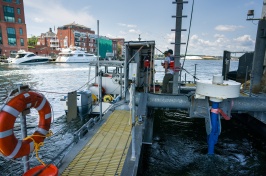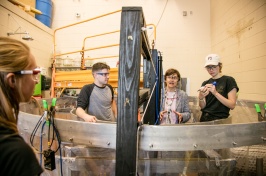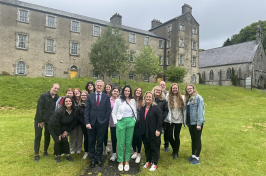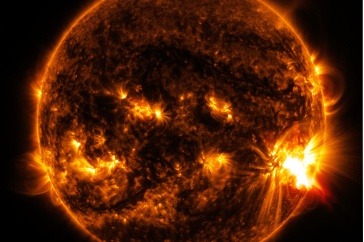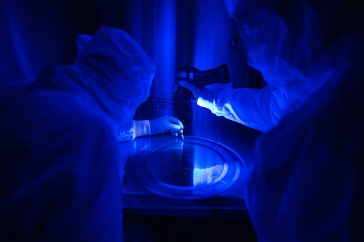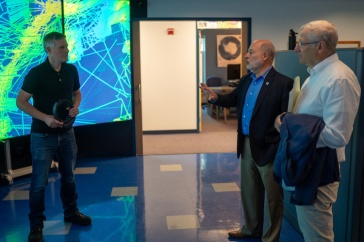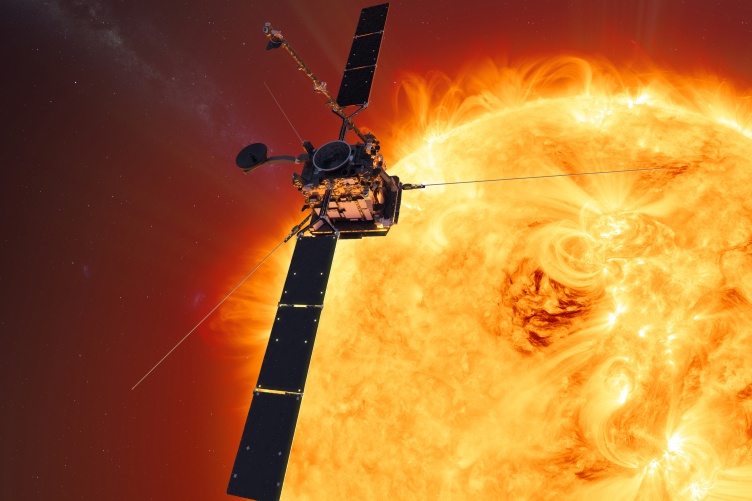
The Solar Orbiter mission will focus on the sun's poles. Photo: ESA
The University of New Hampshire is heading to the sun.
When the new Solar Orbiter blasts off from NASA’s Kennedy Space Center in early February, it will carry with it an instrument designed and built by researchers from the UNH Space Science Center (SSC) to study the Earth’s closest star and its heliosphere — the bubble-like region of space that surrounds our solar system. Solar Orbiter will provide data close up to the sun to help scientists gain an even deeper understanding of the solar wind, solar eruptions and the sun’s magnetic field – all of these influence space weather and impact astronauts, spacecraft, satellites, and our communication technologies.
“The Solar Orbiter is unique from other missions in that it will focus on the higher latitudes of the sun and will have the ability to corotate with the sun and fix on points of interest for longer periods of time, thus providing more detailed information about specific regions,” says Antoinette Galvin, UNH professor of physics and director for the N.H. Space Grant Consortium. Galvin is the lead UNH co-investigator for a subsection of one of the particle detectors on the Solar Orbiter.
The international Solar Orbiter mission, led by the European Space Agency (ESA) in collaboration with NASA, has been in the works for more than a decade. During that time, 43 UNH faculty, staff, and students assisted in the development of the time-of-flight subsection of the heavy ion sensor (HIS), which will detect solar wind particles such as oxygen, nitrogen and carbon, and provide data on their charged state to indicate what part of the sun they originate from.

HIS is a collaboration between UNH, the Southwest Research Institute (the U.S. principal investigator institution), NASA Goddard Space Flight Center, the University of Michigan, and the University of Bern, Switzerland, and is one portion of the solar wind analyzer instrument — one of 10 instruments aboard the Solar Orbiter. The mission also boasts an extreme ultraviolet camera to detect temperature variations on the sun’s surface and a heliospheric imager used for tracking the propagation of coronal mass ejections through space.
David Heirtzler ’96 ‘99G, a research engineer with the SSC, provided simulations used in the design of the time-of-flight subsection of the HIS. He says that UNH is uniquely poised to help out with the Solar Orbiter mission because of all the “in-house expertise” in designing and building time-of-flight space instruments for numerous missions, including Cluster and Cluster 2, IBEX, STEREO, and other forthcoming endeavors.
The SSC assembly lab and the Morse Hall machine shop helped to fabricate HIS components based on the designs from UNH engineers. By running exhaustive simulations on computer models, testing prototypes in vacuum conditions and running several sub-assembly stress tests, the team refined their design to ensure that the time-of-flight subsection would not only detect the proper particles, but also withstand the stress of launch.
“When we were faced with challenges, we got a group of experts together to brainstorm and we were able to work through the problems and find solutions — and that’s a good feeling,” Heirtzler says. This collaborative approach will come in handy if the HIS team encounters problems after launch and needs to troubleshoot any issues that arise, he adds.
Galvin is hopeful that the Solar Orbiter will build on the successes of previous missions to not only learn more about current solar activity, but to predict forthcoming solar storms that may impact humans and technology.
“This mission will ultimately help us understand the science involved in how the solar wind and its structures are created, how these structures evolve in interplanetary space over the distance from the sun to the Earth, and that can help us predict space weather and storms in the future and hopefully achieve true forecasting capabilities,” she says.
The Institute for the Study of Earth, Oceans, and Space (EOS) is UNH’s largest research enterprise, comprising six centers with a focus on interdisciplinary, high-impact research on Earth and climate systems, space science, the marine environment, seafloor mapping, and environmental acoustics. With more than $43 million in external funding secured annually, EOS fosters an intellectual and scientific environment that advances visionary scholarship and leadership in world-class research and graduate education.
-
Written By:
Rebecca Irelan | Institute for the Study of Earth, Oceans, and Space | rebecca.irelan@unh.edu | 603-862-0990















